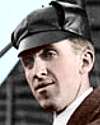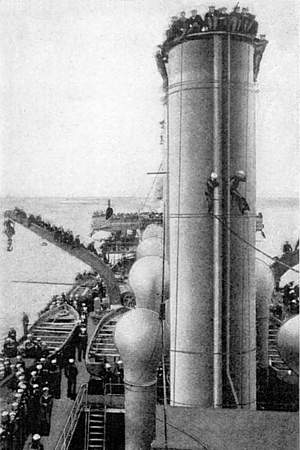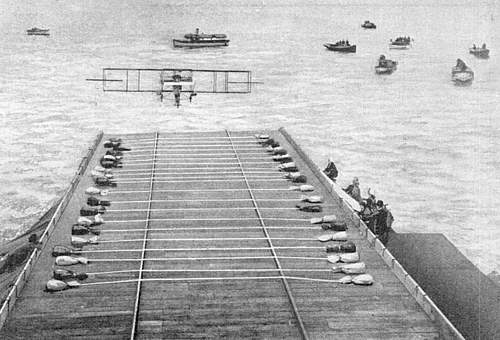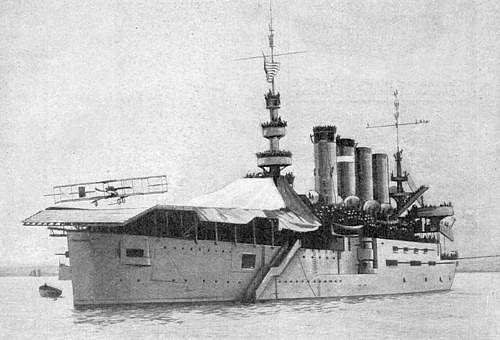 (source)
(source)
|
Eugene Ely
(1886 - 19 Oct 1911)
American aeronaut who, despite a short life, made a lasting contribution to aviation by demonstrating the practicability of an airplane landing on and take-off from ships, which prompted the Navy to pursue the concept of aircraft carriers.
|
AEROPLANE PROVES ITSELF A NAVAL AID
from Popular Mechanics (1911)

The aviation experts of the naval service believe that by the remarkable performances of Glenn Curtiss and Eugene B. Ely in California, during the latter part of January, they have successfully refuted the criticisms of those who have failed to see the adaptability of the aeroplane in naval warfare. With a Curtiss type of biplane, Ely flew from the shore to the deck of the armored cruiser “Pennsylvania,” in San Francisco Bay, where he alighted without accident and then flew from the ship to the shore. Curtiss, with his hydroplane attachment, after several trials, succeeded in ascending in his machine from the surface of the water, returning to the water, and rising again into the air.
There has always been a question as to the ability of the airman to return to the deck of a warship once going into the air. If it was found he could not do so, then, the value of the aeroplane to the battle fleet commander was very slight. The thing was done under ideal conditions with ease and all risk to the machine and the operator was reduced to a minimum. A platform, 130 ft. long and 50 ft. wide, was constructed on the after deck of the “Pennsylvania.” Across this platform were stretched pieces of rope a foot or two apart, to either end of which were attached bags filled with 100 lb. of sand. The under part of the running gear of the aeroplane was fitted with hooks, the idea being that the hooks would engage the ropes as the machine was guided along the platform, and the weight pulling against the machine would gradually bring it to a stop without straining the frame. This theory worked perfectly in practice. Ely lowered the machine to the platform so that it glided onto the platform about 40 ft. from the end. It was moving rapidly when it alighted on the ship but was stopped within 25 ft. by the gradually accumulating weight of the sand bags. The launching of the machine was accomplished in the same manner as the launching from the deck of the scout cruiser “Birmingham” in Hampton Roads.
The Curtiss hydroplane tests took place at San Diego and were the result of a series of experiments Curtiss began more than a year ago. The aeroplane in this instance was equipped with pontoons instead of runners. The machine was run on the water for a short distance at a high rate of speed before being directed into the air. The tests were highly successful and demonstrated the ability of such a machine to be launched from the sea itself. In both these tests the airmen waited several days for the most favorable moment for their work. Whether the feats can be accomplished under the average conditions of weather and sea remains to be demonstrated and on this depends the practical value of heavier-than-air machines in naval warfare.


- Eugene Ely - First flight from shore to ship, from Scientific American (1911).




